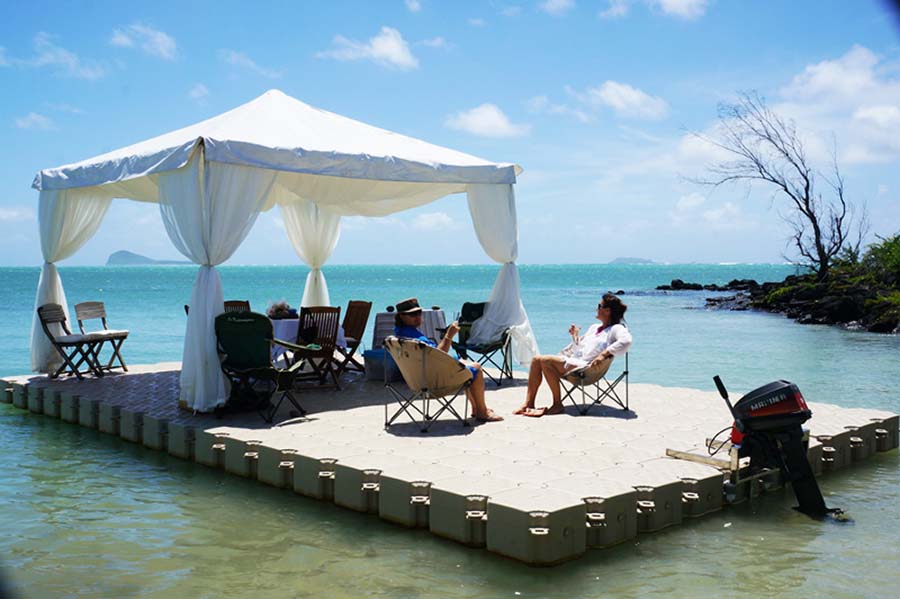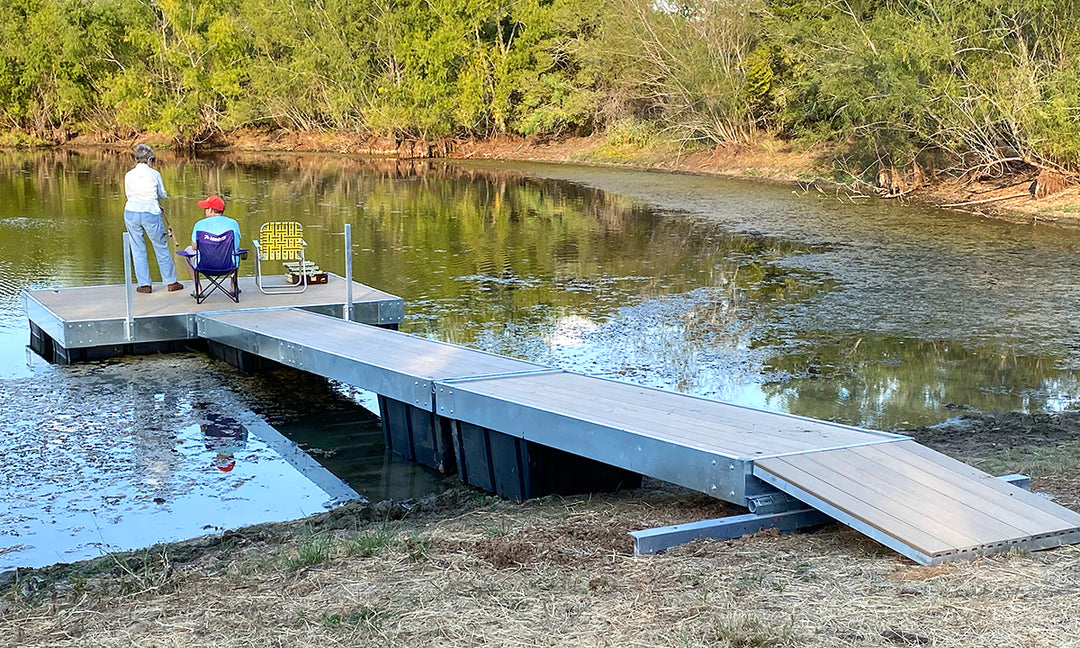Navigating the Options: Picking the Right Dock Company for Your Floating Dock Job
Navigating the Options: Picking the Right Dock Company for Your Floating Dock Job
Blog Article
Produce the Perfect Docking Solution With Floating Docks
Floating docks existing a functional remedy for a range of maritime needs, adjusting perfectly to changing water levels and diverse vessel types. As we explore the crucial components that add to the effectiveness of floating docks, numerous crucial aspects pertaining to security and maintenance will certainly arise, elevating questions concerning exactly how to optimize your docking experience.

Advantages of Floating Docks
Floating docks offer numerous benefits that make them a suitable option for various maritime applications. Unlike fixed docks, floating docks surge and fall with the tide, making sure regular availability for vessels.
Furthermore, floating docks are commonly much easier and quicker to install contrasted to standard fixed structures. Their modular style enables uncomplicated assembly and disassembly, facilitating maintenance and moving when required. This versatility is particularly beneficial for momentary applications or in atmospheres where conditions may transform.
Floating docks likewise tend to be extra eco-friendly, as they decrease interruption to the seabed and bordering aquatic ecosystems. Their resilient nature reduces the risk of damage to aquatic life, advertising a much healthier environment. These docks can be tailored to accommodate numerous vessel dimensions, ensuring that they satisfy certain operational demands.
Ultimately, the combination of flexibility, simplicity of installment, and environmental considerations makes floating docks a very efficient option for a wide variety of maritime needs.
Choosing the Right Materials
Selecting the appropriate products for floating docks is important to make sure security, longevity, and toughness. The selection of materials directly affects the dock's efficiency in numerous environmental problems, including exposure to water, sunlight, and potential wear from aquatic traffic.
Typical products made use of for floating docks include aluminum, wood, and high-density polyethylene (HDPE) Aluminum is light-weight, corrosion-resistant, and needs marginal upkeep, making it an exceptional selection for long life. Its first expense can be higher contrasted to other products.
Timber, while aesthetically appealing and providing a typical look, can be susceptible to rot and insect damages otherwise appropriately treated. Making use of pressure-treated wood or normally durable types like cedar or redwood can reduce these issues.
HDPE is a popular choice due to its resistance to UV rays and chemicals, in addition to being eco-friendly. floating dock builder. It is lightweight and available in numerous colors, enabling modification
Eventually, the ideal material option will certainly depend upon details demands, including budget, wanted aesthetics, and environmental considerations. Mindful assessment of these aspects will certainly bring about a durable and successful floating dock service.
Layout Factors To Consider for Security
When creating floating docks, ensuring stability is a fundamental aspect that can significantly influence their capability and security. Security in floating dock style is affected by different elements, consisting of buoyancy, weight circulation, and the setup of components. An ideal buoyancy system need to utilize products that supply sufficient lift while minimizing weight. This equilibrium makes certain that the dock stays above water, also under differing lots.
Weight circulation is vital; equally try this website distributing loads throughout the dock protects against turning and improves stability. This can be accomplished via calculated positioning of docking devices, such as fenders and cleats, in addition to appropriate spacing of floats. In addition, the measurements of the dock should be attentively planned. Larger designs can provide raised stability, specifically in harsh water problems, while longer docks may require added assistances to avoid sagging.
Another vital consideration is the environmental effect, consisting of wave activity and wind. Including functions such as sidewalls or skirting can help reduce the results of environmental forces, keeping security in damaging conditions. Eventually, a combination of thoughtful style, material selection, and understanding of environmental elements will certainly generate a floating dock that satisfies both security and safety and security demands.
Installment Tips and Methods

Following, secure the needed authorizations and adhere to local laws, which might determine installation methods and ecological considerations. Engage a qualified service provider experienced in floating dock installments if needed. Use high-quality materials designed for marine settings to enhance resilience and longevity.
When placing the dock, straighten it alongside the shoreline to over here promote very easy gain access to. Ensure that the anchoring system is robust, using cinder block or helical anchors to maintain the dock against wind and wave action. It's essential to account for seasonal water level variations, including prospective ice movement in cooler climates.
During the setup, double-check the dock's floatation and security before settling the anchoring. Regularly check the installation for any kind of indications of wear or damage. By following these ideas and techniques, you can attain a safe, functional, and cosmetically pleasing floating dock setup that satisfies your requirements.
Upkeep and Care Standards
Caring and maintaining for floating docks is critical to prolonging their life expectancy and making sure risk-free use. Normal assessments must be conducted to determine any type of indicators of wear, damage, or marine development. Search for splits, loose fittings, or tarnished locations on the dock's surface area, as these concerns can compromise structural integrity.
Cleaning up is vital. Utilize a pressure washer to eliminate algae, barnacles, and debris, which can accumulate gradually. For stubborn growth, take into consideration environmentally pleasant cleansing agents that will not hurt water life.
Furthermore, examine the mooring lines and anchors frequently to ensure they are totally free and secure from corrosion. Replace any frayed or damaged lines promptly to maintain security.
Throughout extreme weather, such as storms or freezing conditions, take preventive measures. Secure the dock with added mooring lines and, if practical, get rid of any detachable elements to stop damage.
Final Thought
In final thought, the execution of floating docks offers a versatile and effective docking service appropriate for numerous maritime applications. With correct setup and routine maintenance, floating docks can supply effective and dependable docking experiences for a wide array of vessels.
As we discover the crucial components that add to the performance of floating docks, numerous key factors concerning stability and maintenance will arise, raising questions about exactly how to maximize your docking experience. Unlike repaired docks, floating docks increase and fall with the tide, making certain constant browse around this site accessibility for vessels.When creating floating docks, guaranteeing security is a basic aspect that can dramatically affect their performance and safety and security. Security in floating dock design is influenced by numerous variables, including buoyancy, weight distribution, and the plan of components. Eventually, a mix of thoughtful style, product option, and understanding of environmental elements will yield a floating dock that meets both stability and security demands.
Report this page